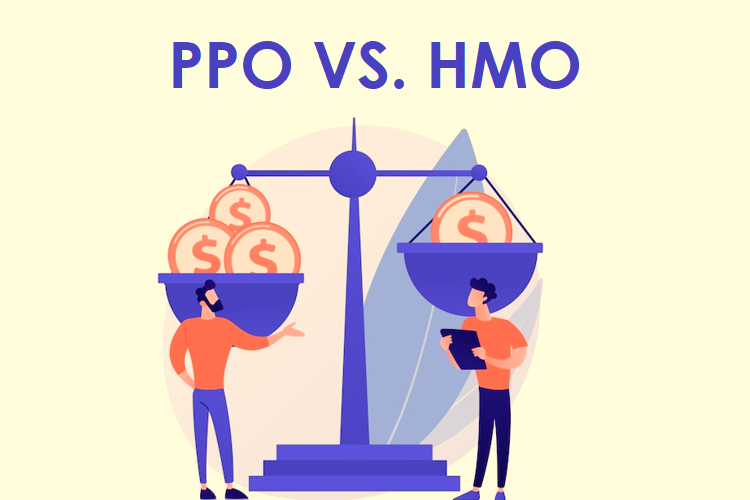When it comes to choosing a health insurance plan, it can be difficult to decide which type of plan is best for you. There are a few different types of health insurance plans available, but two of the most common types are Health Maintenance Organizations (HMOs) and Preferred Provider Organizations (PPOs). In this blog post, we’ll explore the differences between an HMO and a PPO so you can make an informed decision about which type of health insurance plan is right for you.
Introduction to HMO and PPO
Health Maintenance Organizations (HMOs) and Preferred Provider Organizations (PPOs) are two of the most common types of health insurance plans available today. Both types of plans offer coverage for medical expenses, but they differ in terms of how they work and the type of coverage they provide.
An HMO is an organization that provides comprehensive healthcare coverage for its members. It is a type of managed care plan, which means that it is focused on providing quality care at a lower cost. HMOs typically require members to select a primary care physician (PCP) who is responsible for managing the member’s health care needs.
PPOs, on the other hand, are organizations that contract with a network of healthcare providers to provide services to their members. Unlike HMOs, PPOs do not require members to select a PCP and do not limit members to receiving care from in-network providers.
What is an HMO?
As mentioned above, an HMO is an organization that provides comprehensive healthcare coverage for its members. HMOs are designed to provide quality care at a lower cost. They typically require members to select a primary care physician (PCP) who is responsible for managing the member’s health care needs.
When a member visits a doctor, the PCP is usually the first person the member sees. The PCP is responsible for coordinating care with specialists and other health care providers. This helps to ensure that the member receives the most appropriate care for their condition.
In addition to requiring members to select a PCP, HMOs also require members to use in-network providers. In-network providers are doctors and hospitals who have contracted with the HMO to provide services at a negotiated rate. By using in-network providers, HMOs are able to keep costs down for members.
Benefits of an HMO
HMOs offer a number of benefits to their members, including:
- Lower premiums: HMOs typically have lower premiums than PPOs. This is because HMOs focus on providing quality care at a lower cost.
- Comprehensive coverage: HMOs provide comprehensive coverage for medical expenses, including doctor visits, hospital stays, prescription drugs, and more.
- Choose your own PCP: With an HMO, you can select a primary care physician (PCP) who is responsible for managing your health care needs.
- In-network providers: HMOs require members to use in-network providers, which helps to keep costs down.
What is a PPO?
PPOs are organizations that contract with a network of healthcare providers to provide services to their members. Unlike HMOs, PPOs do not require members to select a PCP and do not limit members to receiving care from in-network providers.
PPOs are designed to give members more flexibility and choice when it comes to selecting a healthcare provider. Members can choose to receive care from any provider within their PPO’s network, and they may also choose to receive care from out-of-network providers. However, out-of-network providers may not be covered by the PPO, and members may be required to pay more for their care.
Benefits of a PPO
PPOs offer a number of benefits to their members, including:
- More choice: PPOs give members more choices when it comes to selecting a healthcare provider. Members can choose to receive care from any provider within their PPO’s network.
- Out-of-network coverage: PPOs typically offer some coverage for out-of-network providers, although the coverage may be limited.
- Lower out-of-pocket costs: PPOs typically have lower out-of-pocket costs than HMOs.
- Flexible spending accounts: Many PPOs offer flexible spending accounts to help members with their out-of-pocket costs.
HMO vs. PPO – Cost Comparison
When it comes to cost, HMOs typically have lower premiums than PPOs. This is because HMOs focus on providing quality care at a lower cost. However, HMOs often have higher out-of-pocket costs than PPOs.
PPOs typically have higher premiums than HMOs, but they also have lower out-of-pocket costs. This is because PPOs typically offer more coverage for out-of-network providers. Additionally, many PPOs offer flexible spending accounts to help members with their out-of-pocket costs.
HMO vs. PPO – Network Coverage
HMOs require members to use in-network providers, which helps to keep costs down. However, this can be inconvenient for members if they need to receive care from an out-of-network provider.
PPOs, on the other hand, give members more choices when it comes to selecting a healthcare provider. Members can choose to receive care from any provider within their PPO’s network, and they may also choose to receive care from out-of-network providers. However, out-of-network providers may not be covered by the PPO, and members may be required to pay more for their care.
Pros and Cons – HMO vs. PPO
When it comes to choosing between an HMO and a PPO, there are pros and cons to each option. Here are some of the advantages and disadvantages of each type of plan:
- HMO Pros: Lower premiums, comprehensive coverage, choose your own PCP, and in-network providers.
- HMO Cons: Higher out-of-pocket costs, limited choice of providers, must use in-network providers.
- PPO Pros: More choice, out-of-network coverage, lower out-of-pocket costs, flexible spending accounts.
- PPO Cons: Higher premiums, limited coverage for out-of-network providers, must use in-network providers for certain services.
How to choose between an HMO and a PPO
When deciding which type of health insurance plan is best for you, it is important to consider your own needs and budget. Here are some things to consider when choosing between an HMO and a PPO:
- Do you need comprehensive coverage or are you looking for a plan with lower premiums?
- Are you comfortable with using in-network providers or do you need the flexibility to choose your own providers?
- Do you need coverage for out-of-network providers or are you willing to pay more for this coverage?
- Are you willing to pay higher premiums for a PPO or are you looking for a plan with lower out-of-pocket costs?
By considering your own needs and budget, you can make an informed decision about which type of health insurance plan is right for you.
Conclusion
When it comes to choosing a health insurance plan, it can be difficult to decide which type of plan is best for you. When we compare HMO vs. PPO, both are the most common types of health insurance plans available today. Both types of plans offer coverage for medical expenses, but they differ in terms of how they work and the type of coverage they provide.
HMOs typically have lower premiums than PPOs, but they also have higher out-of-pocket costs. PPOs typically have higher premiums than HMOs, but they have lower out-of-pocket costs and offer more coverage for out-of-network providers.
When deciding which type of health insurance plan is best for you, it is important to consider your own needs and budget. By considering your needs and budget, you can make an informed decision about which type of health insurance plan is right for you.
Jenny Fries, a freelance writer, specializes in writing about Technology, Business, Lifestyle, and Online Health Insurance Quotes. She offers freelance blogging and content writing for SEO. When she’s not writing, Fries likes to travel, cook, and write vacation plans




